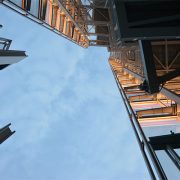Genoa Bridge Tragedy: Who’s responsibility is it?
The Genoa Bridge Tragedy. The question of responsibility.
The Genoa Bridge Tragedy: On 14 August 2018, a viaduct – a major motorway, constructed in the 1960s in the north of Italy, collapsed, killing 43 people. Cars, trucks and people dropped suddenly, crashing to the ground 150 metres below. Sounds surreal in this day and age. But it did happen.
Once the initial shock subsided and emergency efforts completed, the attention turned to questioning – just how did this happen?
A “cable-stayed bridge”, the design featured two pretensioned concrete cables used on both sides of the pillar. According to an article on Archinect.com, the design, “subject to corrosion, it may have made the bridge, which required constant maintenance as an essential traffic hub, vulnerable to collapse.”
An engineer who worked for the company that constructed the bridge claims that the bridge’s supporting piles weren’t built with anti-seismic materials and did not have the capacity to support the weight of heavy traffic.
As reported on News.com, the engineer that designed the bridge “warned four decades ago that it would require constant maintenance to remove rust given the effects of corrosion from sea air and pollution.”
The power of hindsight
Again, hindsight rears its ugly head with a raft of finger-pointing and mismanagement claims. Ultimately a formal investigation into the Genoa Bridge Collapse will look at a range of possible causes including materials used, wear and tear, heavy traffic, structural flaws, poor maintenance budgets and other problems. It raises an important topic for conversation and action.
The considerations for design components of structures spans well beyond the initial construction and ready for use stage. It shows the importance of understanding lifetime usage, maintenance and ease of access, the sustainability and resilience of materials to the elements, and long-term maintenance budgets.
And, ultimately asks the question. “Who’s responsibility is safe design?”
Do you know your responsibilities under safe design legislation?
For more information about the principles of safe design, responsibility for safe design, and safe design in practice, contact us.










